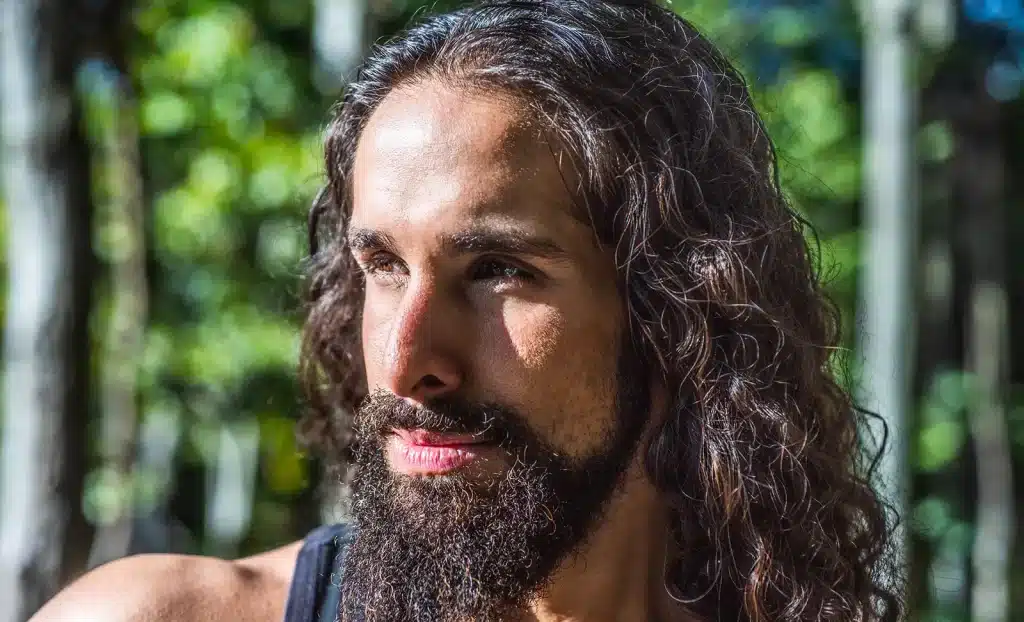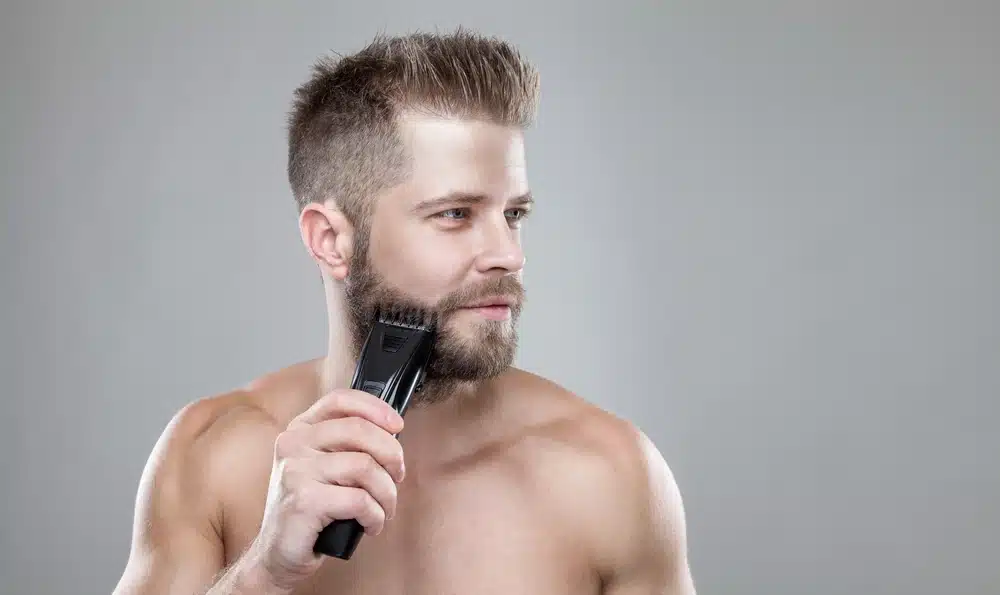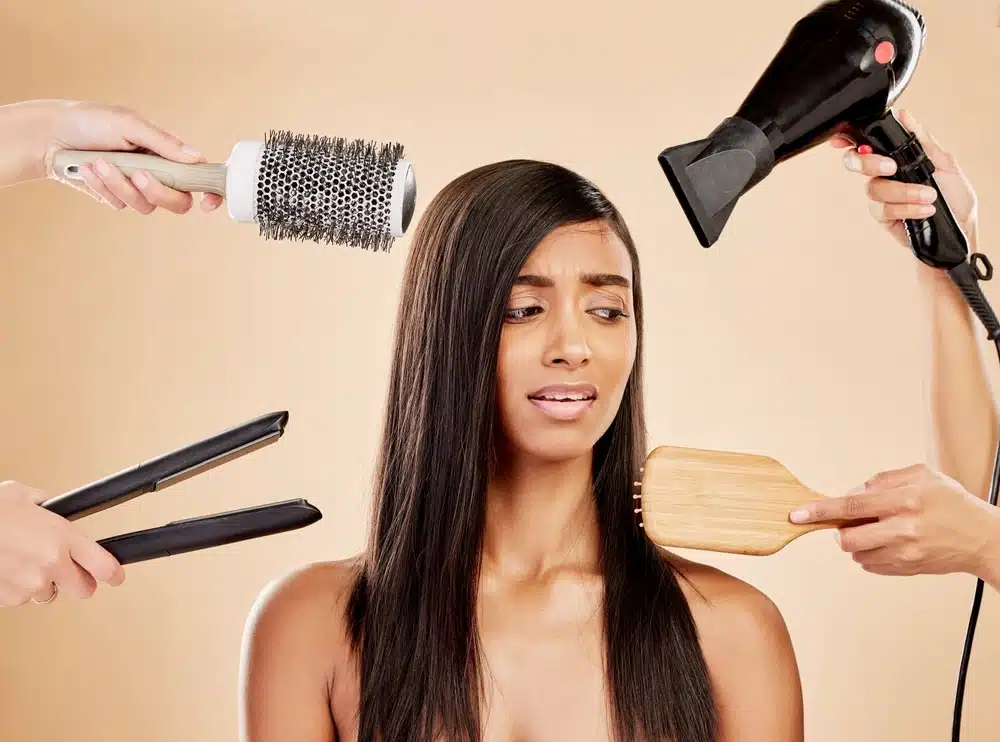You only need to look around in a crowd to see several different hair types. Some people have fine hair, some have coarse and curly hair, and others have spiral-like strands. So, what about yours? What hair type do you have?
If you are a man who wants to update your hair care routine so that your locks look as good as ever, learning your specific hair type is a good idea. Read on to understand all you need to know about male hair types, including top hair care tips and tricks to keep hair in the best condition possible.
The Types of Male Hair
There are four main types of male hair: straight, wavy, curly, and kinky. Each type has three sub-types, making it twelve types in total. Find out what each type means below to see which one you have.
Straight Hair
Type 1 straight hair is defined by strands that grow straight down from the scalp without any defined waves.
1A: This refers to very fine, poker-straight hair and is common in men. It is usually so straight that it’s unable to hold any curl when styled. This type does not have much volume.
1B: Type 1B has more volume than 1A but is still very straight. The hair tends to be soft and smooth, and you might notice a very slight wave if the hair goes past the shoulders.
1C: Type 1C is still called straight hair, but the strands are thicker than 1A and 1B. This type of hair tends to have more texture and can show very gentle waves if grown long.
Tips for Caring for Straight Hair
Straight hair is the easiest hair to look after out of all the male types of hair. Many of your problems may stem from a lack of volume, tangles, and your scalp getting greasy too quickly. Incorporate these tips into your hair care routine if your hair falls under 1A, 1B, or 1C.
Use a Texture Spray: To combat a lack of volume, invest in a good texture spray and spritz it onto your roots for more volume. This will add texture and waves, which can look more attractive when framing a male face. A simple sea salt spray can also help with this.
Do Not Overwash: You likely do not need to wash your hair daily – too much shampoo will lead to damage. If you have particularly greasy hair, washing every other day may be necessary.
Get Regular Trims: Straight hair is susceptible to split ends. To avoid them damaging your entire hair strands, get regular trims.
Experiencing Hair Loss? Discover a Hair Loss Treatment for All Hair Types.
Wavy Hair
Next is the wavy hair type, which is defined by slight curls. However, the waves are subtle and do not fall under the definition of curls. A natural wave often looks lovely, but it also requires some upkeep. One of the biggest issues with wavy hair is frizz and flyaways. Some notable celebrities with wavy hair include Harry Styles, Kit Harrington, and Mark Ruffalo. [1]
2A: 2A is the loosest wave here. This is a natural, soft wave, with the hair forming an S shape towards the ends. It’s pretty loose and can be described as beachy waves.
2B: 2B is a little more defined, with a more noticeable S shape that starts at the root. The hair tends to get curlier as it grows, and people with this hair type often encounter frizz.
2C: 2C is the curliest of the wavy hair types. It is thicker than 2A and 2B, with more defined waves and sometimes even spirals towards the end of the hair.
Tips for Caring for Wavy Hair
Some of the main problems men with wavy hair encounter include frizz and flyaways, and those with finer wavy hair may also find they have a greasy scalp and not enough volume at the roots. Here are some tips for managing wavy hair.
Invest in Highly Moisturising Hair Products: Wavy hair tends to dry easily. To avoid that, use highly moisturising products like hair oils and deep conditioners to give those strands much-needed hydration.
Dry with a Microfiber Towel: Drying wavy hair with a normal towel can lead to more flyaways. To avoid that, invest in a microfiber towel specifically for your locks. Or, choose the easier and cheaper option of using a T-shirt to dry your hair.
Curly Hair
Natural curly hair has more defined curls than wavy hair, with the strands showing tighter patterns. Celebrities with this type of hair include Timothée Chalamet, Aaron Taylor-Johnson, and Adam Brody. Curly hair can look wonderfully voluminous and luscious, but the oil from the scalp may not be able to travel down the hair as easily and can lead to dryness, which certain hair care techniques can address. Curly hair also tends to have high porosity compared to straight or wavy hair, which means it doesn’t retain moisture and can be more susceptible to damage.
3A: 3A hair shows well-defined spirals with a slightly wider circumference than 3B and 3C. The texture is usually fine or medium, with the large, loose spirals offering lots of volume.
3B: 3B has more defined ringlets. The hair texture is usually medium to coarse. It has a lot of body and volume.
3C: 3C hair has the tightest ringlets of all the curly hair types. People often describe this hair type as corkscrews.
Get in Touch with Hair Restoration Experts with Our Hair Track App.
Tips for Caring for Curly Hair
People with curly hair naturally have lots of volume thanks to their spiral locks, however, other issues may make taming the hair harder, such as dryness, frizz, tangles, and breakage. These tips will help you manage any curly hair type.
Using Curly Hair Styling Techniques: Many styling techniques can help you better define your curls, leading to smoother-looking, beautifully curly hair overall. One example is finger coiling, which involves using your fingers to create twists in the hair strands.
Use Deep Conditioners: Curly hair is often very dry. Combat this by using deep conditioners regularly – at least once per week.
Kinky Hair
Kinky hair has the tightest curls of any of the hair types. This hair typically has lots of volume and is often described as coily. The hair texture is usually dense and prone to shrinkage as the hair grows – type 4 hair may appear deceptively short, but when the strands are straightened out, they can be very long. Some celebrities with this hair type include Jimi Hendrix and Corbin Bleu.
4A: 4A hair shows very tight curl patterns forming a spiral. The texture can be fine or wiry, and the curls show a springy, loose S-shaped pattern.
4B: 4B is a very coily hair type with a tight curl pattern. The hair is often described as fluffy and is quite prone to dryness. It has more of a Z-shaped pattern compared to an S-shape.
4C: This hair type is the curliest hair of them all. It is defined by tightly packed coiled curls that provide a zig-zag pattern. It’s very springy, tends to clump, and is prone to shrinkage.
Tips for Caring for Kinky Hair
Kinky hair is very voluminous and versatile and has very tight coils. There are many styles you can enjoy with this hair type. However, kinky hair tends to shrink dramatically when it dries, and keeping it well moisturised can be an issue as the natural oils from the scalp cannot travel down the Z-shaped hair as easily. Here are some tips for getting your kinky hair to look and feel amazing.
Use Hydrating Products: Coily hair often lacks hydration. To help prevent dryness, use highly hydrating and moisturising products to prevent breakage.
Use Hair Oils: Hair oils can do wonders for kinky hair. Some of the best include argan oil, castor oil, and avocado oil.
Style While Wet: It can be hard to style kinky hair once fully dry. Instead, start hair styling when the hair is still damp, using styling products specifically for kinky or coily strands.
What to Do if You’re Experiencing Hair Loss?
Let’s start by saying that all types of male hair can experience hair loss, so you may experience it whether you have straight wavy curly or kinky hair.
While all of the hair care tips and tricks above are great ways to look after your locks and, in some cases, boost growth, they won’t be a solution to androgenetic alopecia (male pattern baldness). In this case, you need a more targeted treatment.
A hair transplant is an excellent method for regrowing hair after experiencing significant loss. The FUE method is particularly effective in transplanting individual strands to the problem area. It’s a solution that lasts a lifetime. However, be aware that the curlier types of male hair may lead to a more complex hair transplant procedure, so it is best to seek a hair transplant surgeon who has already worked on your hair type.
Different Hair Types Male: In Summary
As you can see, there are many types of male hair, with four main categories (straight, wavy, curly, and kinky), each with three sub-types. Knowing your exact hair type as a male can help you understand the best hair care routine to nourish your strands. Not all hair is the same.
Are you interested in a hair restoration solution for all hair types? Contact our expert team today or check out our patients gallery to see what our work can do for all hair, from straight to curly.
Sources:
- https://www.gq.com/gallery/celebrities-with-curly-hair





